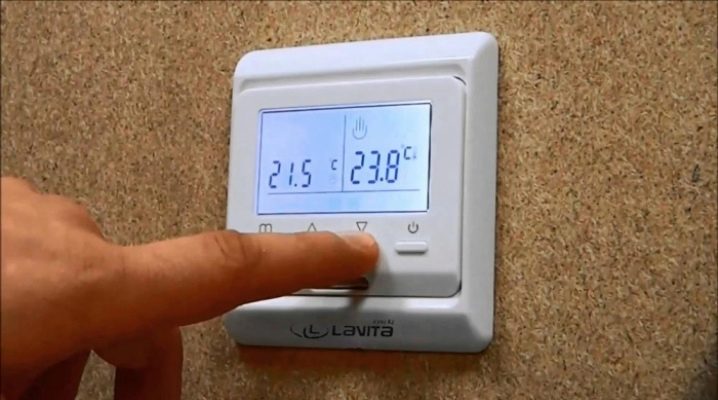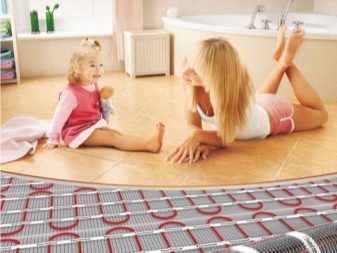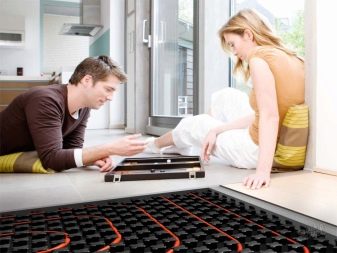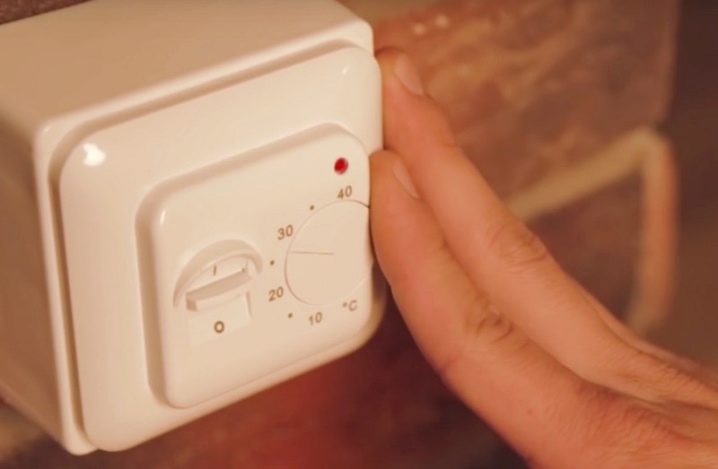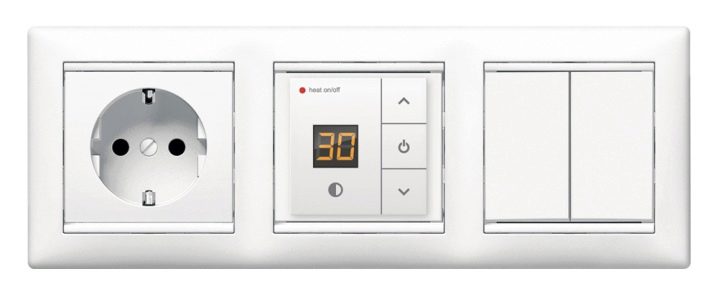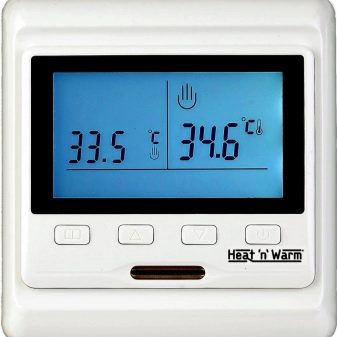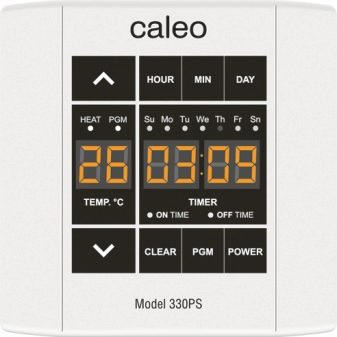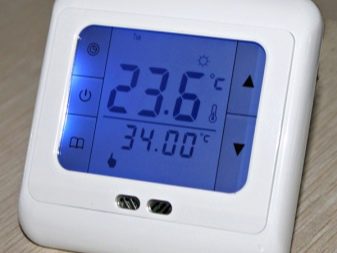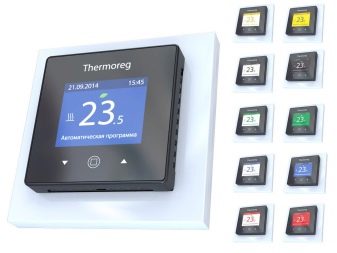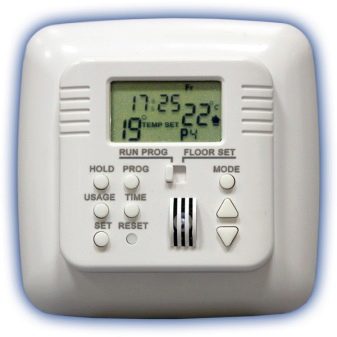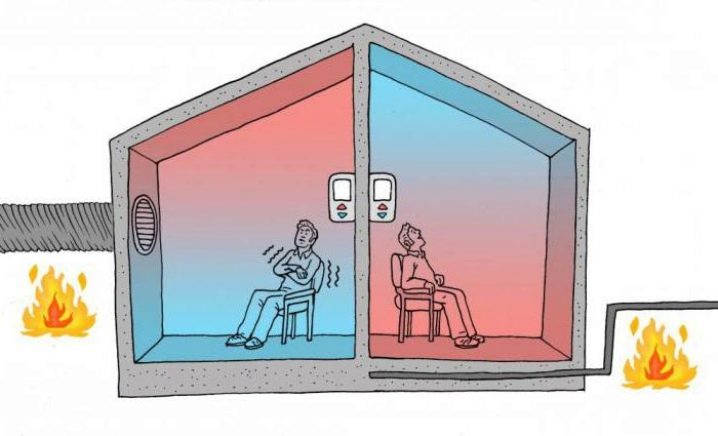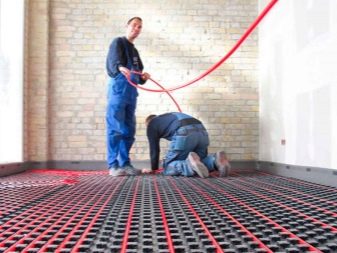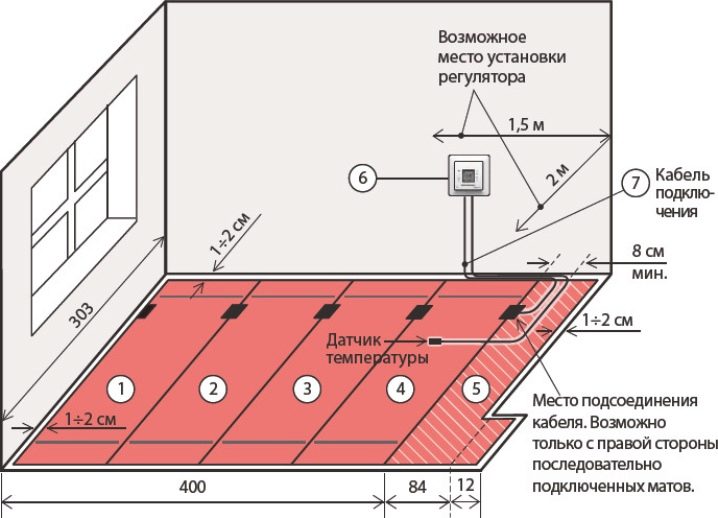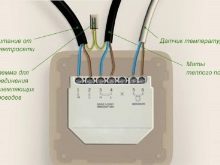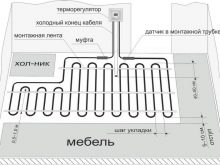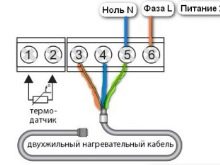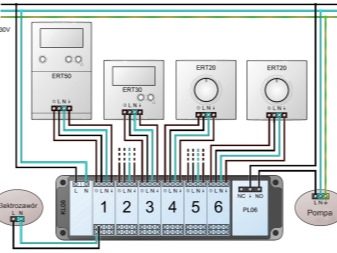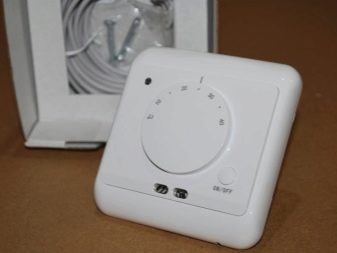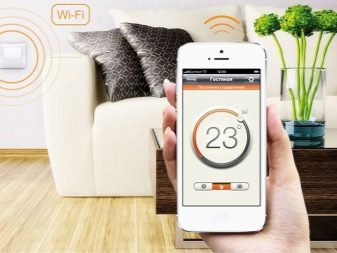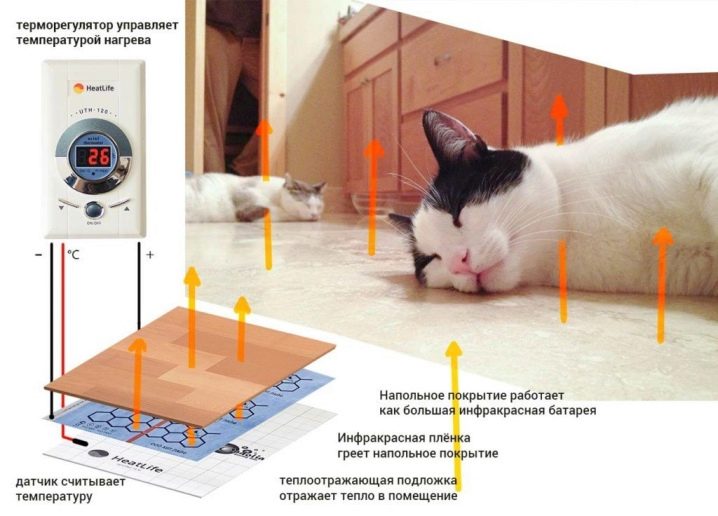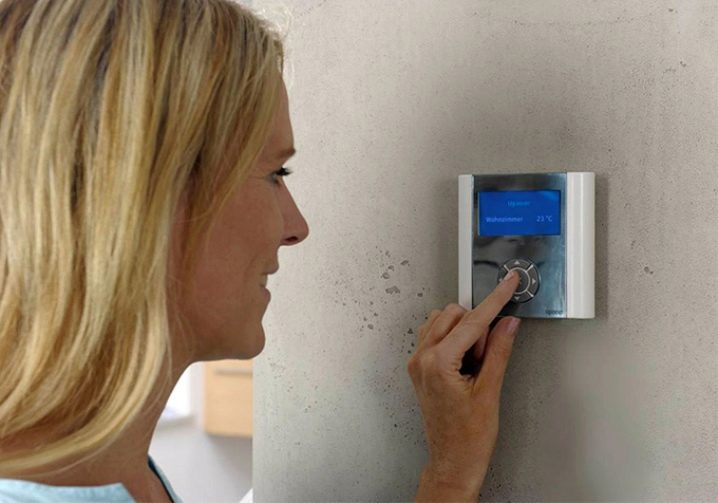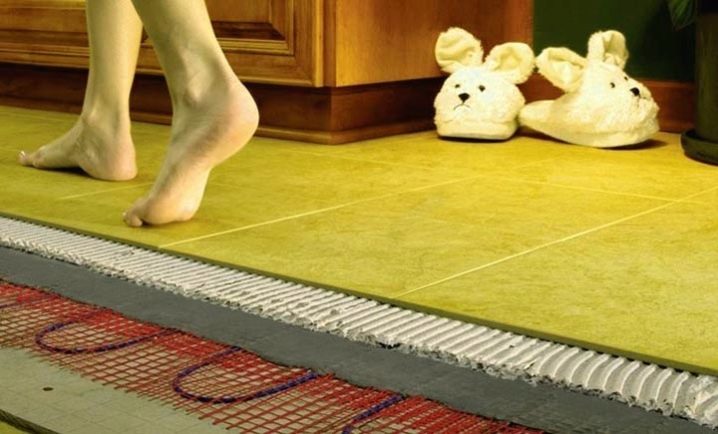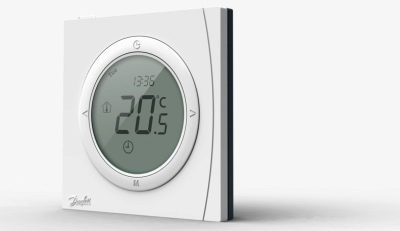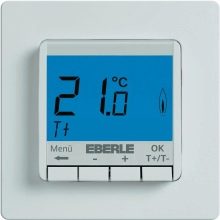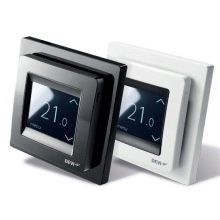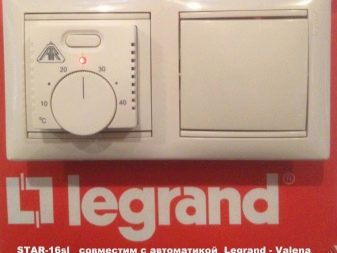Features of thermostats for underfloor heating
Heating in a private house can be arranged in several ways. Today, warm flooring is gaining immense popularity, making it possible to maximize the use of heat from the heat carrier. Such a system is quite complicated in the device, since it consists of a set of nodes and sensors. Before proceeding to the construction of such systems, it is necessary to clarify the features of thermostats for underfloor heating. This will allow you to properly adjust the temperature inside the house or apartment.
Special features
The thermostat is a special device whose task is to monitor the temperature of the floor heating and the room as a whole. It is used in conjunction with several sensors located in or near the warmest floor.
Sensors for underfloor heating are used to automatically turn on the heater when the temperature drops below the set threshold. With the help of such devices, you can save up to 40-50% of the electrical energy that is used for heating underfloor heating.
The sensors themselves are located directly in the room, where they are configured. The range of adjustable temperatures can vary from 5 to 45 degrees depending on the manufacturer and purpose of the system. Modern models can be complemented by a touch screen, which simplifies the configuration of all characteristics. Designs of this type can work with almost all types of heating systems. It is very important to properly connect them to the heaters.
Thermostats are universal systems that perform several additional functions, the main ones of which are:
- automation of switching on and off the floor heating;
- heating power control;
- protection against overheating (in case of critical situations, the system is turned off).
Types and principle of operation
Temperature controllers are complex designs that work in tandem with various assistive devices.
The principle of operation of these systems can be described by the following sequence of operations:
- Sensors read the temperature inside or near the floor. After that they send the received value to the thermostat.
- The invoice thermostat compares the data with those set by a person using a temperature controller. If the floor overheats, the heating system turns off. When the temperature is too low, the thermostat turns on the heat.
Organizing work with electric underfloor heating is much easier than with water systems. To do this, it is enough to provide the design with a special relay that will turn on or turn off the power supply. Water heating is organized using a two-way or three-way thermostatic valve.
These systems are needed for mixing hot and cold water. In the design of the thermostat for the water floor there is a special servo, which can open or close the channel with water, depending on the performance of the sensor. This approach allows us to analyze only the temperature of the water, which is not always relevant for creating comfortable conditions inside the room.
The modern market of thermostats is saturated with deviceswhich can be divided into several types.
Mechanical
In such thermostats, the temperature is set using the rotary knob. These devices maintain the temperature at a certain value, so to create a comfortable environment, a person must adjust the system manually depending on the temperature of the floor.
These thermostats are often installed on water floors, as they can work in conjunction with three-way valves, changing the flow of water. Some improved modifications of this type can also affect electrical circuits, controlling the heater itself.
Digital
Thermostats of this type are in many ways similar to mechanical systems. Their distinctive feature is the presence of a digital display and special buttons for setting the temperature. With these devices you can more accurately set the values, which makes them more popular.
One of the varieties of such regulators are sensory modifications. Management of all parameters in them is performed using the touchscreen.
Programmable
The thermostat of this type is the most difficult.It allows you to adjust the temperature not only at a particular moment, but also to program it for a specific period of time.
These devices are complemented by timers, with which you can specify how the floor should be heated on a particular day, at night, or on a specific date in a particular month.
Programmable thermostats are also complemented by external sensors that read the temperature of the air inside the room. This allows you to maintain optimal settings at any time of the day or night.
One of the advantages of these systems is significant energy savings. This is achieved through periodic heating, and not the constant operation of the system.
Almost all thermostats work only with a specific room. Today, there are two-zone systems that are connected to several rooms. This allows you to control the temperature from one point.
How to choose?
Thermostat for underfloor heating is one of the most important elements. Therefore, his choice should be approached carefully.
Correctly choose the thermostat can, following a few simple recommendations:
- Mechanical controls are the best option for rooms with a small area. When the dimensions of the room are significant, then it is better to use programmable thermostats. They save a lot of energy.
- Designs with three-way valves should be used in the case when the heating is organized with the help of a separate water heating system.
- Analyze the technical parameters of the thermostat. They must be designed for a specific power system, as well as withstand the voltage drops. Experts recommend taking regulators with a small margin of all technical parameters.
- Buy products only famous brands. This is a kind of guarantee of their long and reliable service. Do not use cheap analogues that do not have any certificates and documents confirming the quality.
- Pay attention to the number of outputs for connection. Some modifications can work at once with several points. But if you do not need this, then it is better to buy a standard model.
How to connect with your own hands?
The technology of connecting the thermostat to a warm floor consists of the following steps:
- Preparing a place for a thermostat. Standard modifications are installed in ordinary boxes inside the wall, but there are also overhead models. If you purchased a built-in model, then you need to make a hole in the wall for it.
- The location of the sensors. These elements are located inside the cement screed near the heating cable. The sensors are hidden in a special closed corrugated pipe to prevent concrete from getting there. From the sensors, remove the cable to the place of attachment of the thermostat.
- Electricity connection. Initially, wires from the central electrical network are supplied to the thermostat. You can take them from the outlet or another similar source. Cables are connected according to a special scheme on the regulator. It has 3 outputs that are intended for phase, zero and ground. They must be connected in accordance with the scheme applied to the frame of the device. After that, cables from the temperature sensor are also connected to the inputs.
- Connecting heating cable. There are two options here. If there are only two wires inside the cable, then the first pair is connected to the phase and zero, and the rest to ground.When the stranded wires are used, only one side of the cable is connected. For this, all three wires are connected in series to the corresponding outputs. It is important to follow the recommendations and use the scheme provided by the manufacturers.
How to check?
After installing the thermostat, be sure to check the system for performance.
For this you need to perform a few simple steps:
- Initially, we translate the device to the minimum temperature. After that, you need to switch to a maximum. During this, you should hear a kind of low-volume click. If it is, then the device is working properly.
- If the thermostat is programmable, then you should install any program or specify the sequence of switching on the mechanism. After that, during the day, you should just watch how the warm floor behaves. It is important that all operations exactly match the settings of the thermostat.
Control
Thermostats make it as simple as possible for the user. But inside these systems many complex assemblies and structures can be hidden.
Control of such devices can be carried out in several ways:
- Mechanical. For such purposes, manufacturers provide special rotary knobs. Depending on their position, water flow meters are set up or current is supplied. Such systems are very often used with water "combs", which carry out the distribution of the liquid. The disadvantage of this method is that it is difficult to achieve an accurate value setting with a difference of less than 5 degrees.
- Push button. This approach is more perfect, as it allows you to control the temperature in a more narrow mode. The setting of the thermal relay is carried out either by classic buttons or by using the touch screen. Here, only the interface changes, and the principle of operation does not practically change.
- Remote control. Temperature controllers are installed on the so-called wi-fi boilers. These devices are capable of receiving radio signals and, based on them, change the settings of the regulator. These mechanisms are quite complex and are often used only in the so-called "smart" homes, where everything is fully automated and requires minimal human intervention.
Some modifications of thermostats require adjustment of the temperature sensing head. This allows systems to be synchronized to obtain accurate values during operation.
User's manual
The work of thermostats is quite simple and requires minimal human intervention. Here it is only important to set the temperature correctly, which should be in the system.
But it is important to adhere to a few simple rules:
- Do not use thermostats in wet areas. If you still need to install them here, then use only specialized products.
- Keep the floor temperature no higher than 35-37 degrees. With strong and constant heating can damage the decorative floor covering. For example, a tree may begin to crack and crack.
- When using the thermostat, be sure to follow the manufacturer's instructions. Read it before setting up complex programs.
Faults
The thermostat is a complex mechanism, so there is a high risk of its failure.
It should be noted a few faults that are often found in such devices:
- Flipping the thermostat. Often the cause is poor contact between the device and the input wires. To check this, you should disassemble the case and analyze the quality of the mountings. In some cases, you also need to measure the resistance of the sensor.
- Lack of floor heating. If this happens at the maximum position of the regulator, it may mean that the temperature sensor is installed very close to the cable.
- Blinking red light. It indicates that the temperature sensor is broken and need to be replaced.
- No current. There are several reasons for this. First of all it is necessary to check whether all power cables to the thermostat are connected correctly. If the contact is good, then you need to look for damage inside the thermostat. Often these faults are not always repairable. Therefore, the elimination of the problem will only be a complete replacement of the thermostat.
- The device does not warm up the floor to the set temperature and turns off earlier. It is easy to check if you set the device to maximum. Serviceable systems will immediately go into heating mode. If this does not happen, you should restore the system.
Repair of thermostats presupposes the presence of certain skills of working with electrical circuits, so it is better to trust such operations to trusted specialists or organizations.
Manufacturers and reviews
Thermostats allow you to properly adjust the temperature of the floor heating. Therefore, they must be of high quality and reliable. Today on the market there are several types of such devices, among which there are several good brands:
- Danfos Programmable systems do an excellent job with their tasks. Products are supplied with robust temperature sensors to ensure highly accurate device settings.
- Eberle. Under this brand produce several types of thermostats. Special attention should be paid to mechanical devices that are used to adjust the temperature in industrial facilities. There are also thermostats that can operate even at high humidity.
- Devi. Temperature regulators from Denmark are highly accurate and reliable. The company produces several types of regulators, which are complemented by high-quality software.
- Legrand. One of the most reliable brands of thermostats. Here you can find both conventional mechanical and programmable systems. Some modifications are also adapted to high humidity.
- Heatlux. Temperature controllers of this brand are quite widespread. They differ in multifunctionality. But, according to reviews of many owners, some modifications serve poorly and quickly fail. In this case, the company poorly executes their warranty service.
This rating of thermostats is not complete, as there are many quality products on the market that are suitable for specific tasks.
Thermostats are a versatile solution that allows for optimal performance of a heated floor, regardless of its type. Use for these purposes only quality products that meet all regulations and standards.
You can learn about the features of thermo-regulators for underfloor heating from the video.
